| ALL |
|
ART DECO
| OVERVIEW |
|
| |
The term Art Deco is a now firmly established designation for an aesthetic of the late 1920s and 1930s that in its own day was called art moderne. In architecture, the style took various forms, each of which has prompted historians to devise different identifying terminology. In the 1960s, the more ornamental phase of popular modernism was dubbed Art Deco, echoing the name of the 1925 Parisian Exposition des Arts Decoratifs et Industriels Modernes, where the style’s formal design motifs, patterns, and decorative predilections were first observed. Recognizing in Deco a character both modern and abstract but a style that nevertheless avoided the white, volumetric, and planar reductivism of the emerging 1920s “Bauhaus Modern,” some historians referred to the style as “modernistic,” that is, pseudomodern or approaching modern. These and other design terms and stylistic labels have been applied to the several dimensions of Art Deco architecture after the mid-1920s.
Inspired by the aerodynamic forms and kinetic lines emerging from the drafting boards of industrial designers, a “Streamline Moderne” architectural style (dubbed “nautical moderne” when marine imagery was most explicit) evolved as one of the quintessential styles of the 1930s. In architecture, it borrowed from the streamlining evidenced in the forms of new transportation machines—planes, trains, ships, and automobiles—and streamlining was most frequently applied to buildings that served these transportation machines: air terminal buildings, bus terminals, marinas, and especially such roadside buildings as diners, gas stations, and car dealerships. Recognizing that streamlining’s paring down of moderne forms to the ultimate teardrop was paralleled by a general economy of line and form and that this restraint was considered appropriate in a period of economic depression, writers employed the term Depression modern to describe elements of selected examples of the later Deco-era aesthetic. Finally, when 1930s government architects looked to a restrained classicism to communicate an image of authority and order, a Deco-era “modern classic” derivation presented itself in county courthouses, New Deal-era post offices, and other government architecture.
The Art Deco period in architecture, therefore, was polyglot and multifarious, an age in which Progressivism and modernity were embedded in different forms in which the more conservative Deco stylists, often traditional Beaux-Arts-trained designers, might express their ornamental predispositions in more abstract modern terms. Likewise, classicists might mollify earlier Edwardian enthusiasm for the baroque in favor of a new monumentalism that was simpler, plain surfaced, and grand without being grandiloquent. Finally, the more avant-garde modernists offered a populist, ornamental, and colorful l’art decoratif of recognized, albeit abstracted, motifs.
The Art Deco era was fundamentally a 20th-century machine age. In Deco reliefs and architectural ornament, a knife-edged profile transformed human, animal, and plant forms into lowrelief sculptural representations treated as faceted machine-cut patterns of light and shadow. Similarly, a Streamline Moderne building’s curved corners, neon signage, marquees, and “drivethrough” features, as found in diners, bus terminals, and gas stations alike, merely borrowed forms from the period’s machine, especially from transportation and industrial designs. Architecture was characterized by a transmogrification of aerodynamic shapes and surfaces from streamlined fenders, curved car bodies, and zephyrlike lines of speed that, by the 1930s, shaped and accented Chrysler Air Flows, Hupmobiles, Cords, and other contemporary sedans and coupes of the day. Comparable architectural elements emerged from designs first shaping airplane fuselages and wing sections, from the aerodynamic shrouds enveloping the Pennsylvania S-1 locomotive or bull-nosed Studebakers of Raymond Loewy, or from the hydrodynamic hull of a Norman Bel Geddes futuristic ocean liner. Moreover, during the Deco era, technology (in the form of steel-frame construction, reinforced concrete, and plate glass) provided the means to build skyscrapers higher than ever before, making the Chrysler Building (1930), the Empire State Building (1930–31), Rockefeller Center (1931–40), and indeed, the entire skyline of New York icons of the age.
The period was also quintessentially an era of popular modernism. Cosmetic Deco and moderne facades brought a face-lift to Main Street America by an applied architectonic skin of colorful, glazed terra-cotta, Vitrolite, ceramic or gloss metallic panels, glass brick, neon, and other Deco-era materials. At the same moment that European modernists such as Le Corbusier, Walter Gropius, and Ludwig Mies van der Rohe were defining an avantgarde modern style based on lack of or minimal color, no ornament, and an emphasis of volume over mass, popular ornamentalists in America rejected the utilitarian for visual, the intellectual for the sensual, the rational for the expressive, and the sociological for the purely decorative. Art Deco was jazzy, bright, sexy, loud, and visually appealing. If Bauhaus modernism and the International Style appeared to limit its focus to functionalism at the exclusion of emotionalism or expressionism, Art Deco found its appeal in the very color and excitement that polychromatic stylized facades, neon lighting, and zigzag profiles communicated.
Recognizing Deco’s increasing presence on Main Street, in Kress and F.W.Woolworth five-and-dimes, in arty neighborhood theaters with their sunburst splashed facades, and in chic department stores and other commercial emporia, historians have characterized the Art Deco style as transcending social class, as egalitarian and democratic, and as the modern aesthetic of the people. Even today, a revived Art Deco is in evidence at populist marketplaces as the preferred style of perfumeries and at the cosmetic displays of department stores. This neo-Deco, both chic and cheap, parallels the rebirth in the 1980s of the Streamline Moderne in roadside architecture as evidenced in nostalgic diners and drive-through hamburger chains.
Landmarks of Art Deco architecture, therefore, are less often palaces of royalty, cathedrals, or monumental institutional buildings and more often commercial, Main Street, and roadside structures—indeed, department stores were nicknamed “people’s palaces,” and skyscrapers of the period were called modernistic cathedrals of commerce. Among the most noteworthy were Timothy Pflueger’s Paramount Theater (1929) in Oakland, California; G.Albert Lansberg’s Warner Brothers’ Western (Wiltern) Theater (1930) in Los Angeles; B.Marcus Priteca’s Pantages Theater (1929) in Hollywood; and Donald Deskey’s Radio City Music Hall (1931) in New York. Only occasionally was the style of cathedrals of commerce applied to genuinely religious edifices: First Church of Christ, Scientist, in Perth, Western Australia, designed by Ochiltree and Hargreave, is a notable late Deco church of 1939, although perhaps the best-known religious building of the idiom is the 1929 Boston Avenue Methodist Episcopal Church in Tulsa, Oklahoma, by Ada M.Robinson and Bruce Goff. The true cathedral of commerce on Main Street, however, was the department store, which ranged from such landmarks as Bullock’s Wiltshire store (Los Angeles, 1928) by John and Donald Parkinson to scores of F.W.Woolworths, Kress fiveand-dimes, and small boutiques in small towns nationwide. However, the vertical giants of commerce were the skyscrapers. These were sometimes actually dressed in a Gothic Deco, as at Atlanta’s City Hall (1930) by G.Lloyd Preacher. Generally, however, the Deco skyscraper rose skyward to form towering commercial ziggurats and office buildings in New York whose prominence advertised sponsoring companies. McGraw-Hill (1931, Raymond Hood), Barclay-Vesey Telephone (1923–26, Ralph T.Walker), Chrysler (1930, William Van Alen), and RCA Victor (1931, Cross and Cross) were the ultimate Deco exemplars of capitalist architecture.
Indeed, the extensive construction of taller urban office buildings and apartment towers during the Deco era has prompted some historians to label Art Deco the “skyscraper style.” Distinctive zigzag setbacks brought Deco skyscrapers a jazz-aged syncopated profile, a feature that was initially required by the 1916 zoning ordinance in New York but soon developed as a style. Beyond the New York landmarks cited previously, Manhattan’s Deco masterpieces included the Waldorf Astoria Hotel (1930, Schultze and Weaver), the Chanin Building (1927–29, Sloan and Robertson), the Panhellenic Tower (1929, John Mead Howells), and the Film Center Building (1928–29, Ely Jacques Kahn). The 450 Sutter Building (1928, Timothy Pflueger) in San Francisco and the W.W.Orr Building (1930, Pringle and Smith) in Atlanta are two medical office buildings whose relief panels and ornament reflect the popular modern style, the former’s decoration employing Mayan elements, the latter a Decoesque serpent and staff of Asclepius. Among the ornamentalists enriching Deco buildings were muralists and sculptors. Among the most representative period murals were those executed between 1934 and 1943 for 1,100 local post offices under the sponsorship of the U.S. Treasury Department’s Section of Painting and Sculpture (later known as the Section of Fine Arts). Most notable among Deco sculptors was Lee Lawry, whose relief carvings and sculpture may be seen at the Nebraska State Capitol (1919–32, Bertram G.Goodhue), the Louisiana State Capitol (1930–32, Weiss, Dreyfous, and Seiferth), and Bok Tower (Mountain Lake Singing Tower, 1929, Milton B.Medary) as well as at Rockefeller Center. In southern Florida, Miami Beach preserves an entire historic district of Art Deco hotels, apartment buildings, and other period landmarks by architects Henry Hohauser, L.Murray Dixon, Anton Skislewicz, and others. Notable works include Hohauser’s Hotel Park Central (1937) and Hotel Cardozo (1939), Dixon’s Marlin Hotel (1939) and Ritz Plaza (1940), and Skislewicz’s Breakwater Hotel (1939) and Plymouth Hotel (1940). These works synthesize modern and Art Deco elements into a unique blend of 1930s ornament, streamlining, and ribbon windows accented in these oceanside structures with local decorative references and regional themes, including waves, palm trees, fountains, flamingos, fish, sails, portholes, ship bows, and rising bubbles.
Since the 1980s, revitalization of the beachfront Deco color palette on refurbished facades and in rehabilitated hotel lobbies in a Postmodern vein has created a “tropical Deco” style that has transformed an originally predominantly white architecture into a wash of pastels, rainbow figure-ground profiles, and neon-enhanced pizzazz. In Los Angeles, Sunset Towers (1929, Leland A.Bryant) is comparable in form to Miami Beach’s smaller-scale residential blocks, and further echoes of this domestic Deco found its way into private residences. The only large collection of like Art Deco structures to rival Miami Beach is the town of Napier, New Zealand, substantially destroyed by an earthquake and rebuilt within a short period of the 1930s. Both a Mediterranean or Spanish Mission style and a Decoinformed international modern informed nearby Hastings, New Zealand, but the rebuilding of the commercial district of Napier provides an unusual concentration of period architecture in a city well off the beaten track. Moreover, a remarkable body of Art Deco architecture survives in major Australian cities including theater architecture by William Leighton (Windsor, 1937, in Nedlands and Perth) and Samuel Rosenthal (Beacon, 1937, South Fremantle) as well as Deco office buildings in Sydney (City Mutual Building, 1934–36, Emil Sodersten) and Melbourne (ACA Building, c.1936, attributed to Hennessy and Hennessy). A strong presence of streamlining and flatroofed, ribbon-windowed modernism informed this region’s international Deco, with Australian architects achieving designs of additional interest when ornamental accents included kookaburra birds and other native references. Australia’s quintessential Art Deco landmark, however, is a monumental Deco classic: C. Bruce Dellit’s powerful Anzac Memorial in Hyde Park, Sydney, dating from 1934.
Embodying the monumental form, decorative detail, and spirit of the best formal, public side of the Art Deco style, the Anzac Memorial, like smaller monuments of the period nationwide, is an emotionally charged memorial to the Australian and New Zealand fallen from the world wars. Such a restrained yet monumental modern classic was foreshadowed in the World War I memorials by British architect Sir Edwin Lutyens, including his Whitehall Cenotaph (1919–22) in London and reflected in the work of Paul Cret (Folger’s Shakespeare Library, 1929–31, Washington, D.C., and National Naval Medical Center, 1939–41, Bethesda, Maryland). The Palais de Chaillot (1937) by Carlu, Boileau, and Azéma is Paris’s best example. In the United States during the same period, the modern classic phase of Art Deco architecture is represented by Goodhue’s Los Angeles City Hall (1922), San Francisco’s Veterans Hospital (1934, designed by the U.S. Treasury Department’s supervising architect), and Atlanta’s Federal Post Office Annex (1931–33, A.Ten Eyck Brown). The modern classic and Depression modern character finds its way into Holabird and Roche’s Chicago Board of Trade Building (1929–30) and the same architects’ Chicago Daily News Building (1929). However, it is given its most evocative representation in Hugh Ferriss’s renderings of dramatic urban towers, as published in his Metropolis of 1929, whose images appeared immediately brought to fruition in Buffalo’s City Hall (1929–31) by George J.Dietel and John J.Wade. Indeed, Ferriss’s influence is seen as late as the 1990s, as evidenced by Rabun Hatch and Associates’ GLG Grand (1992) in Atlanta. The 1939 New York World’s Fair closed the late moderne era with clear evidence that the decade had been dominated by streamlining. At the fair, the General Motors Highways and Horizons Exhibit, including the Futurama, presented the World of Tomorrow as envisioned by Norman Bel Geddes, a world of and for the automobile encouraging the free-flowing movement of goods and people across the continent. In 1932 Bel Geddes had published his industrial designs (particularly planes, trains, and cars) in Horizons.
The streamlined phase of Art Deco focused the attention of designers on roadside architecture. W.W. Arrasmith of Louisville, Kentucky, designed bus depots for Greyhound, including those for Evansville, Indiana (1938), Washington, D.C. (1939), and Atlanta (1940), the latter now hidden under a hideous “modernization” two decades ago. George D.Brown’s Atlantic Greyhound Bus Terminal in Columbia, South Carolina, shows the influence of Arrasmith’s streamlining that informed such structures nationally. Similarly, Texaco commissioned Walter Dorwin Teague to design standardized service stations, and variations on five models were sited at prime corner building sites nationwide. In private and public realms alike, electronics, transportation, radio communication, and other scientific and technological ad vances were viewed as signs of the progress of the age, and images of these modern marvels adorned murals and ceiling paintings and shaped neon outlines in signage and advertising. Representations of the machine informed industrial photography, motion picture and theater sets, and the sharp-edged profiles of Charles Sheeler landscapes and Ferdinand Leger figures.
In architecture, the Deco-era design impulses, in Streamline Moderne, modern classic, or faceted Art Deco style, were a synthesis of tradition and Progressive design, nature and the machine, and the ornamental as well as the abstract. In all, Art Deco architecture was both modern and popular, and although associated with known designers and stylists, some of its most ubiquitous forms are anonymous and found along the roadside.
ROBERT M.CRAIG
Sennott R.S. Encyclopedia of twentieth century architecture, Vol.1 (A-F). Fitzroy Dearborn., 2004. |
| |
|
| |
|
| |
|
| |
|
| |
|
| |
|
| |
|
| GALLERY |
|
| |
|
| |
 |
| |
1922, Los Angeles City Hall, LOS ANGELES, USA, Austin, Parkinson and Martin |
| |
|
| |
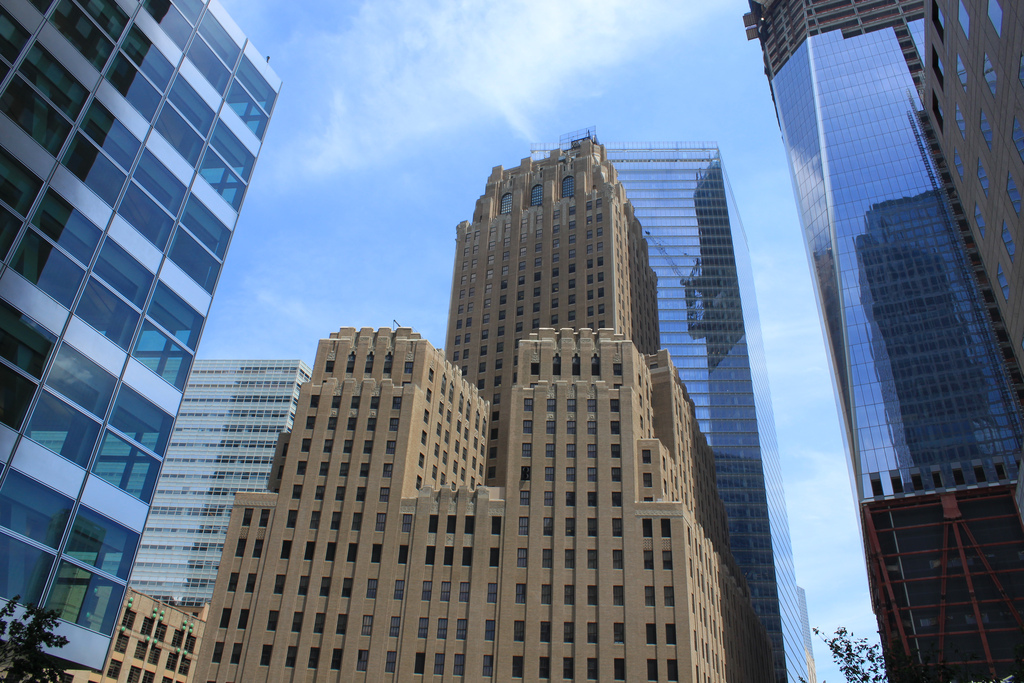 |
| |
1923-1926, Barclay-Vesey Telephone, NEW YORK, USA, Ralph Walker |
| |
|
| |
 |
| |
1925, Pavilion of the Galeries Lafayette Department Store at the Exposition 1925 |
| |
|
| |
 |
| |
1925, Salon of the Hôtel du Collectionneur from the 1925 International Exposition of Decorative Arts, furnished by Émile-Jacques Ruhlmann, painting by Jean Dupas, design by Pierre Patout |
| |
|
| |
|
| |
 |
| |
1927-1929, the Chanin Building, NEW YORK, USA, Sloan & Robertson |
| |
|
| |
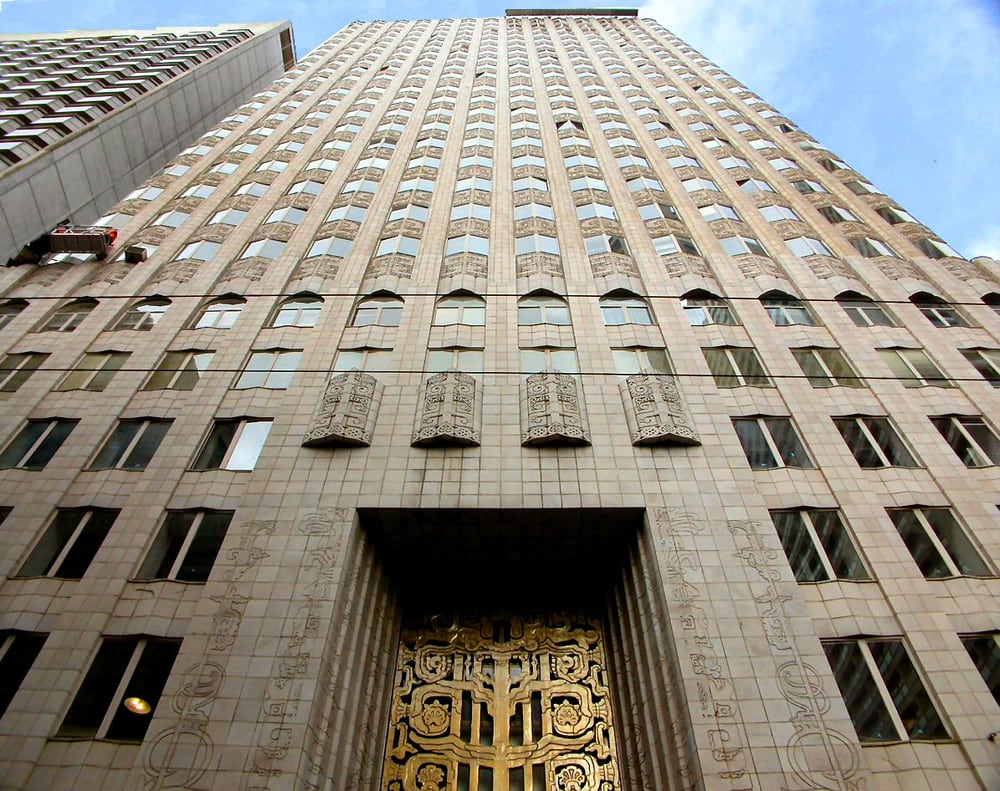 |
| |
1928, The 450 Sutter Building, San Francisco, USA, Miller and Pflueger |
| |
|
| |
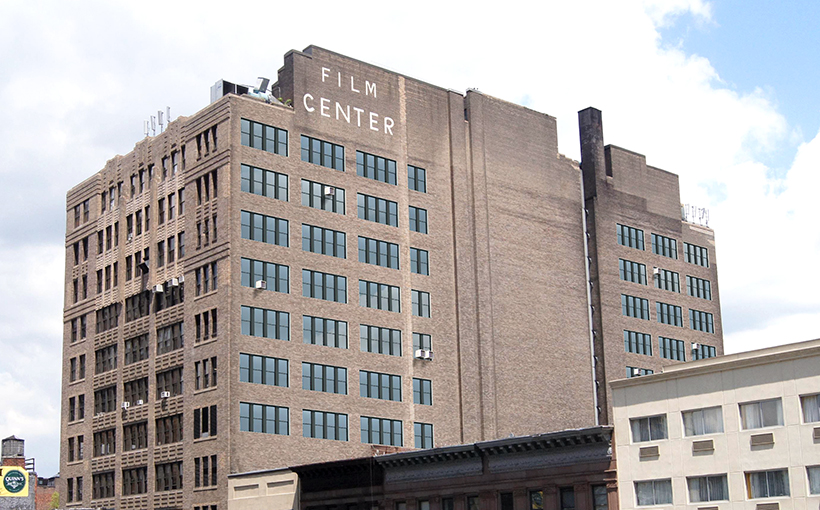 |
| |
1928-1929, the Film Center Building, NEW YORK, USA, Ely Jacques Kahn |
| |
|
| |
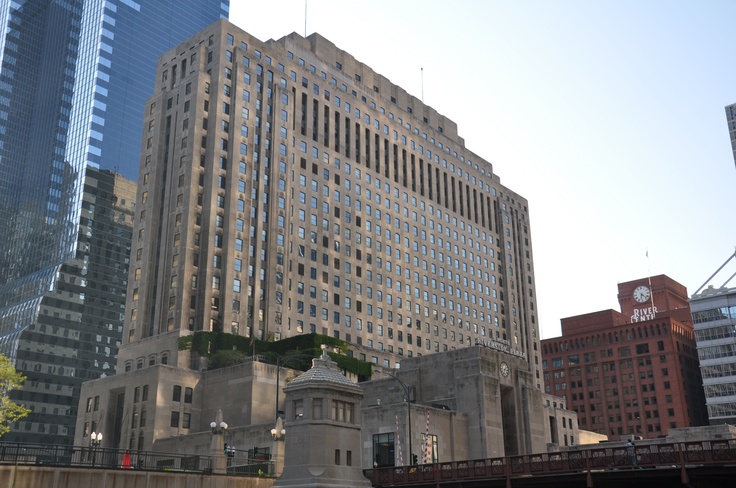 |
| |
1929, Chicago Daily News Building, CHICAGO, USA, Holabird & Root |
| |
|
| |
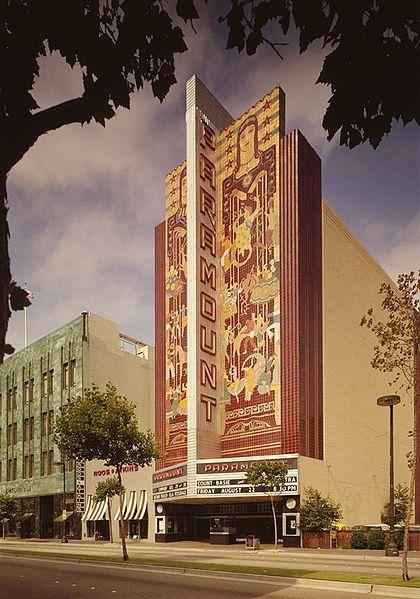 |
| |
1929, Timothy Pflueger’s Paramount Theater, Oakland, USA, Timothy L. Pflueger |
| |
|
| |
 |
| |
1929, the Panhellenic Tower, NEW YORK, USA, John Mead Howells |
| |
|
| |
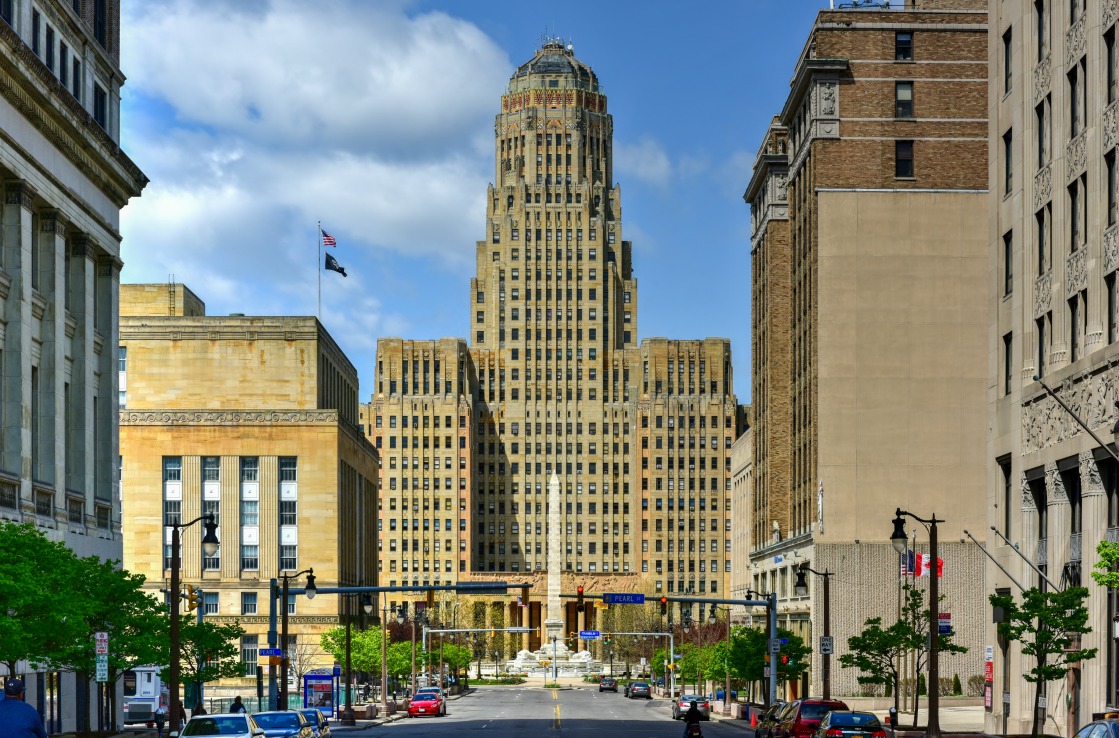 |
| |
1929-1931, Buffalo’s City Hall, NEW YORK, USA, Dietel, Wade & Jones |
| |
|
| |
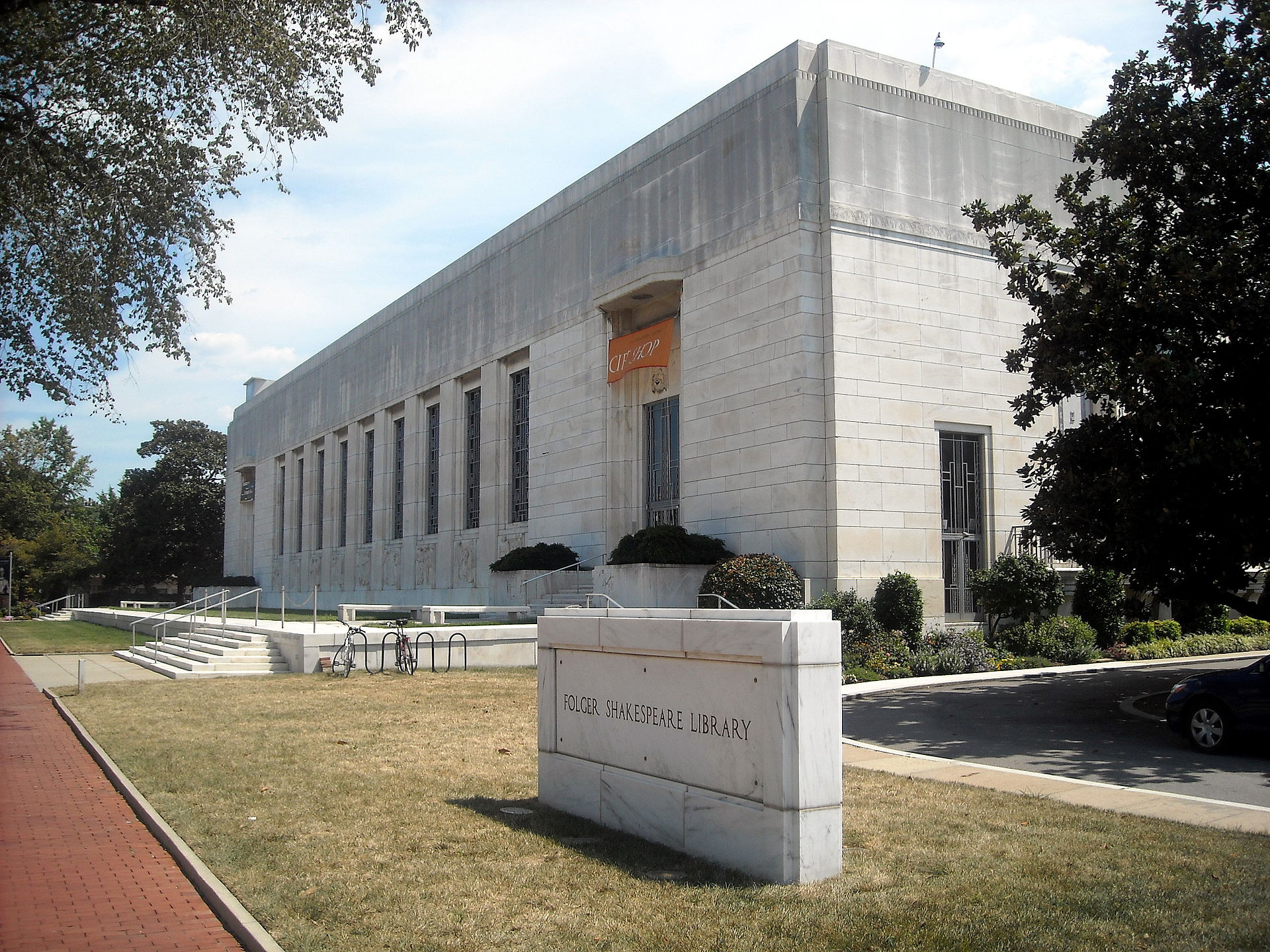 |
| |
1929-1931, Folger’s Shakespeare Library, Washington, D.C, USA, Cret, Paul P |
| |
|
| |
 |
| |
1930, Chrysler Building, New York, USA, William Van Alen |
| |
|
| |
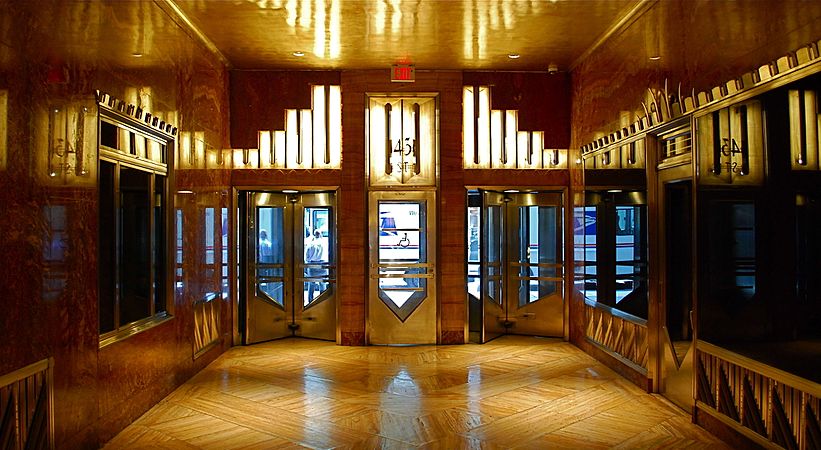 |
| |
1930, Lobby of the Chrysler Building, New York, USA, William Van Alen |
| |
|
| |
 |
| |
1930, Elevator of the Chrysler Building, New York, USA, William Van Alen |
| |
|
| |
, Los Angeles.jpg) |
| |
1930, Warner Brothers’ Western (Wiltern), Los Angeles, USA, Stiles O. Clements
G. Albert Lansburgh |
| |
|
| |
 |
| |
1930, Atlanta’s City Hall, Atlanta, USA, Philip Shutze |
| |
|
| |
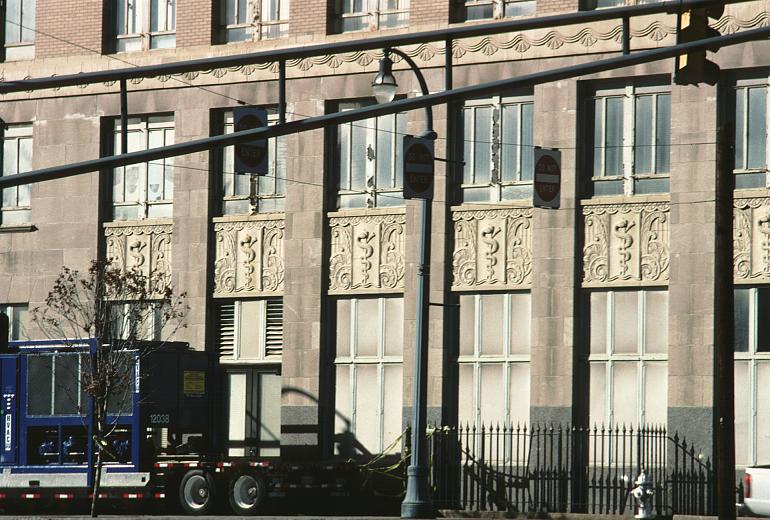 |
| |
1930, the W.W.Orr Building, ATLANTA, USA, Francis Palmer Smith |
| |
|
| |
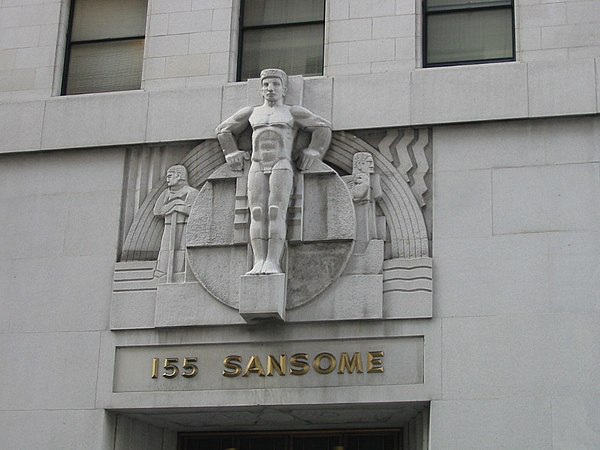 |
| |
1930, Sculpture group over the door of the San Francisco Stock Exchange, San Francisco, USA, Ralph Stackpole |
| |
|
| |
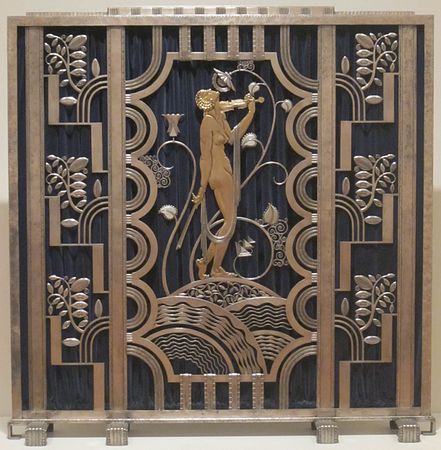 |
| |
1930, Iron fireplace screen, Cleveland, USA, Rose Iron Works |
| |
|
| |
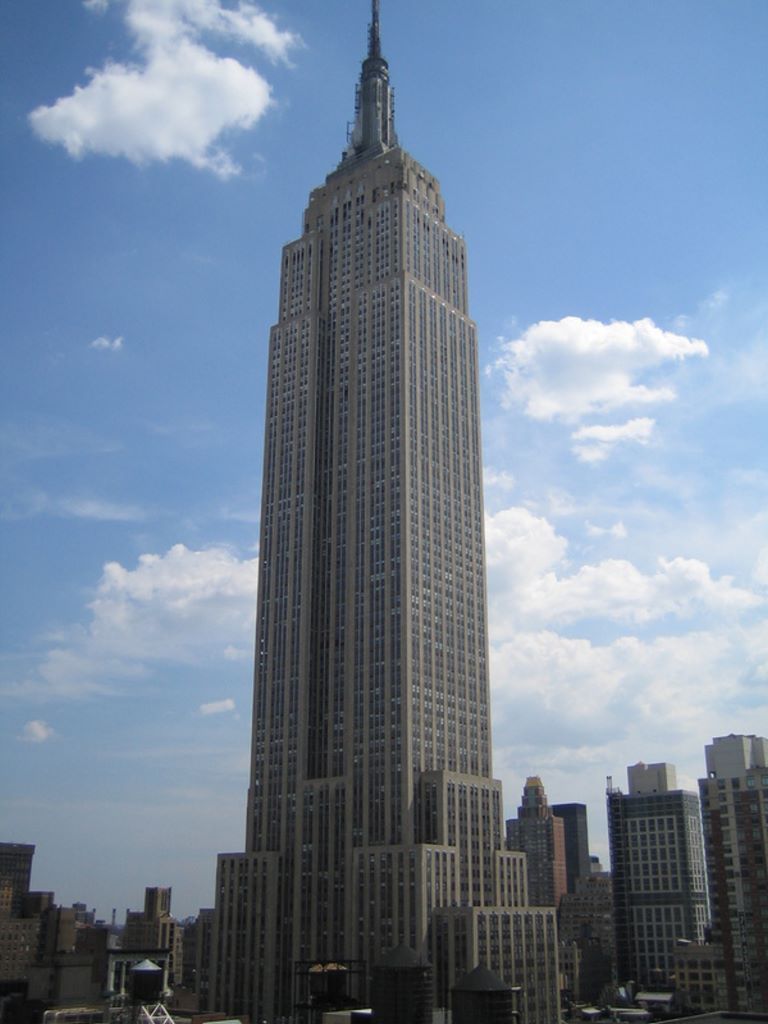 |
| |
1930–1931, the Empire State Building, New York, USA, Shreve, Lamb and Harmon |
| |
|
| |
 |
| |
1930–1934, Entrance of the Villa Empain, Brussels, BELGIUM |
| |
|
| |
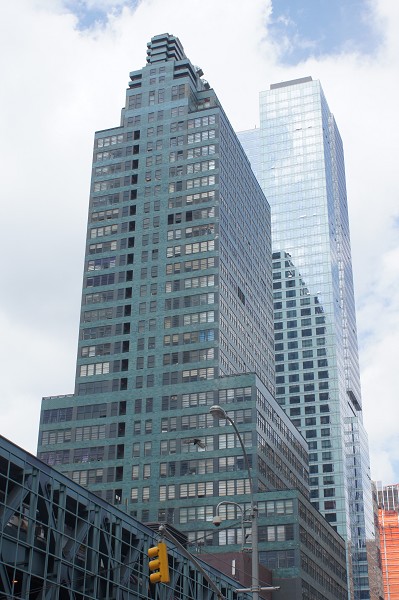 |
| |
1931, Generall McGraw-Hill, NEW YORK, USA, Raymond Hood |
| |
|
| |
 |
| |
1931, Detail of mosaic facade of Paramount Theatre, Oakland, USA |
| |
|
| |
 |
| |
1931-1933, Atlanta’s Federal Post Office Annex, ATLANTA, USA |
| |
|
| |
 |
| |
1931–1940, Rockefeller Center, New York, USA, Raymond Hood |
| |
|
| |
 |
| |
1932, Aerial between Wisdom and Gaiety, façade of BBC Broadcasting House, London, UK, Eric Gill |
| |
|
| |
 |
| |
1933 , Portal decoration Wisdom, the Rockefeller Center, New York, USA, Lee Lawrie |
| |
|
| |
, New York, Cross & Cross.jpg) |
| |
1933, Crown of the General Electric Building (also known as 570 Lexington Avenue), New York, USA, Cross & Cross |
| |
|
| |
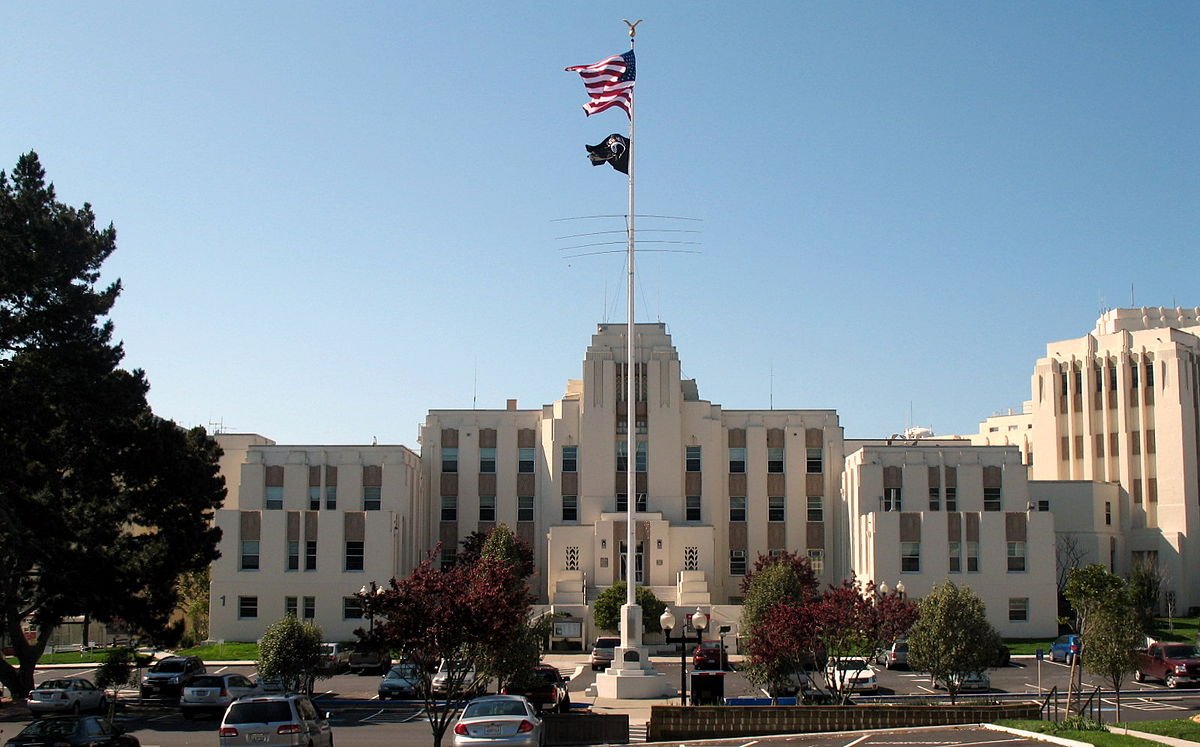 |
| |
1934, Veterans Hospital, SAN FRANCISCO, USA |
| |
|
| |
 |
| |
1937, Hohauser’s Hotel Park Central, MIAMI, USA, Henry Hohauser |
| |
|
| |
 |
| |
1937, The Palais de Chaillot, PARIS, Louis-Hippolyte Boileau |
| |
|
| |
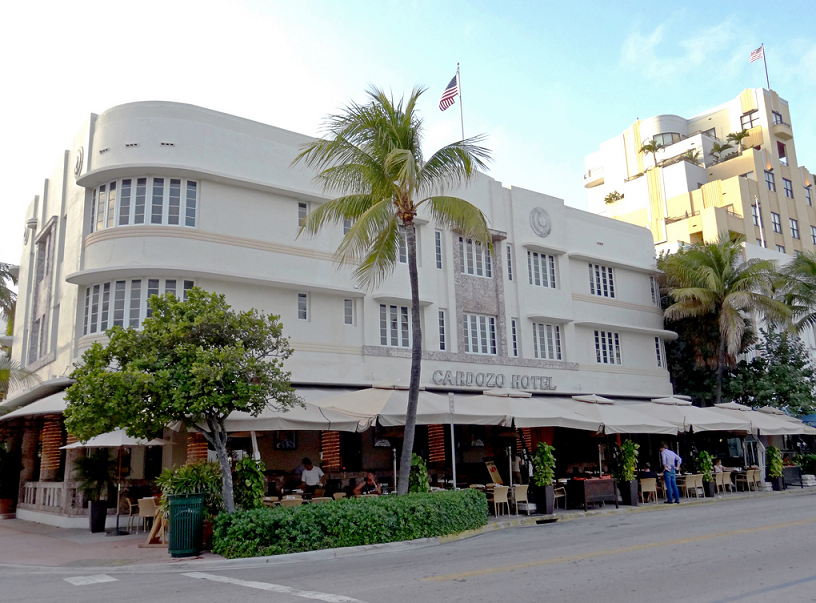 |
| |
1939, Hotel Cardozo, MIAMI, USA, Henry Hohauser |
| |
|
| |
 |
| |
1939, Dixon’s Marlin Hotel, MIAMI, USA, L. Murray Dixon |
| |
|
| |
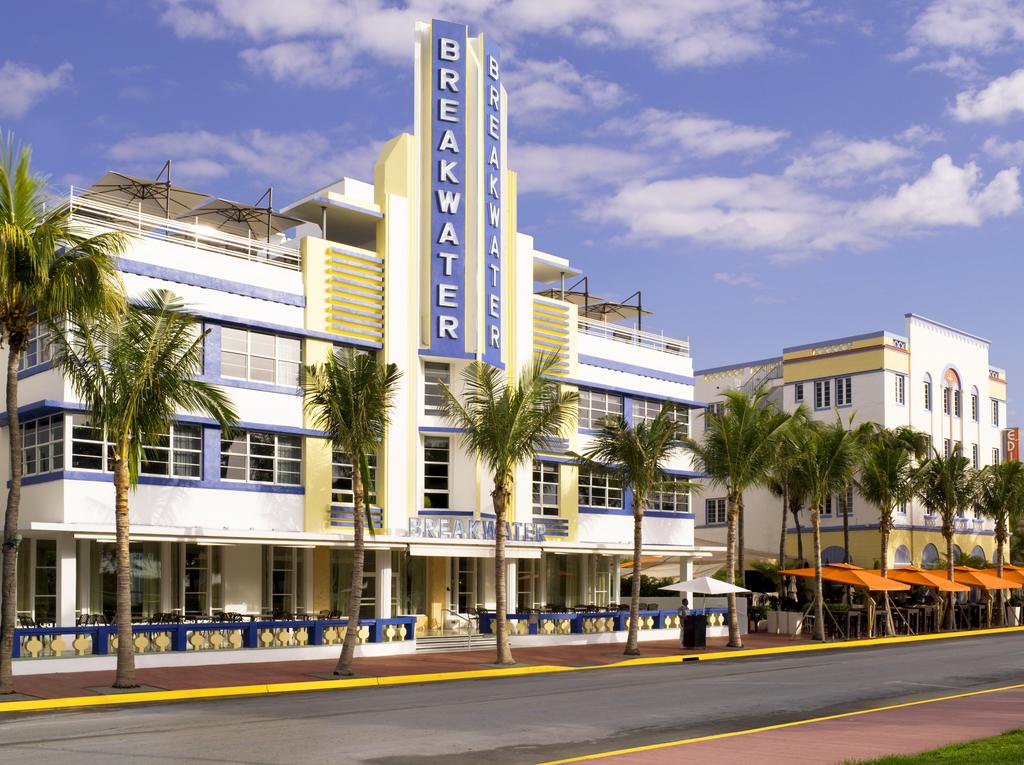 |
| |
1939, Skislewicz’s Breakwater Hotel, MIAMI, USA, Anton Skislewicz |
| |
|
| |
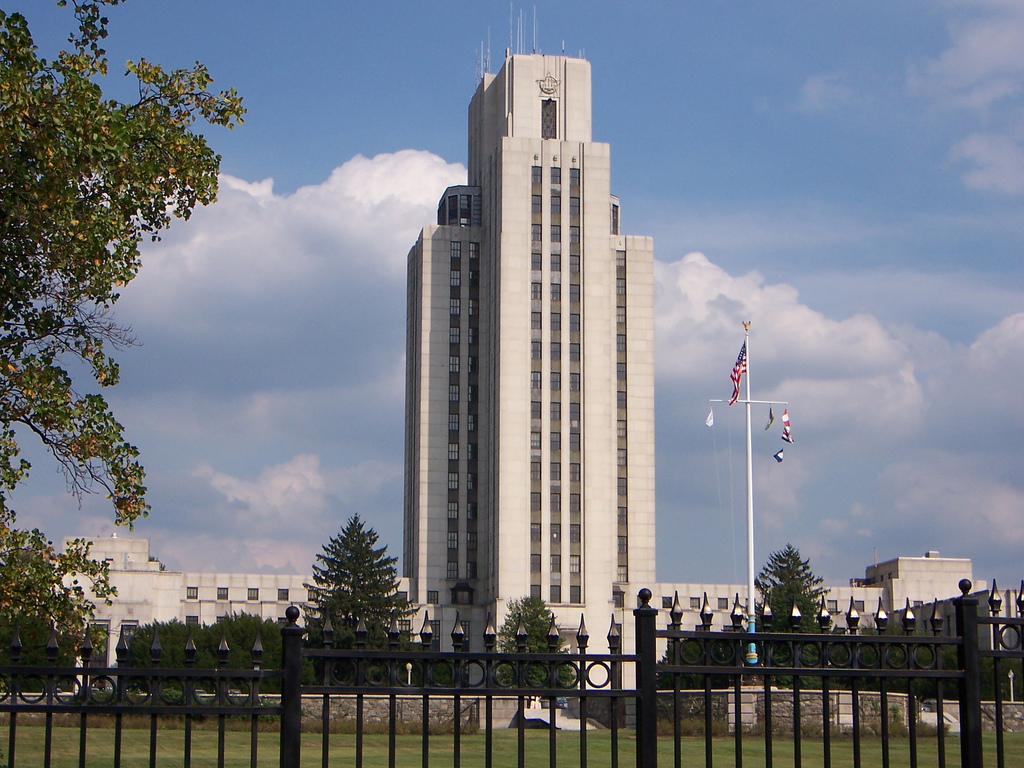 |
| |
1939-1941, National Naval Medical Center, Maryland, USA |
| |
|
| |
 |
| |
1940, Ritz Plaza, MIAMI, USA, L. Murray Dixon |
| |
|
| |
 |
| |
1940, Plymouth Hotel, MIAMI, USA, FRANCE, Anton Skislewicz |
| |
|
| |
|
| |
|
| |
|
| |
|
| |
|
| |
|
| ARCHITECTS |
|
| |
|
| |
|
| |
|
| |
|
| |
|
| |
|
| |
|
| BUILDINGS |
|
| |
1922, Los Angeles City Hall, LOS ANGELES, Austin, Parkinson and Martin |
| |
|
| |
1923-1926, Barclay-Vesey Telephone, NEW YORK, Ralph Walker |
| |
|
| |
1927-1929, the Chanin Building, NEW YORK, Sloan & Robertson |
| |
|
| |
1928, The 450 Sutter Building, San Francisco, Miller and Pflueger |
| |
|
| |
1928-1929, the Film Center Building, NEW YORK, Ely Jacques Kahn |
| |
|
| |
1929, Chicago Daily News Building, CHICAGO, Holabird & Root |
| |
|
| |
1929, Timothy Pflueger’s Paramount Theater, Oakland, Timothy L. Pflueger |
| |
|
| |
1929, the Panhellenic Tower, NEW YORK, John Mead Howells |
| |
|
| |
1929-1931, Buffalo’s City Hall, NEW YORK, Dietel, Wade & Jones |
| |
|
| |
1929-1931, Folger’s Shakespeare Library, Washington, D.C, Cret, Paul P |
| |
|
| |
1930, Chrysler Building, New York, William Van Alen |
| |
|
| |
1930, Warner Brothers’ Western (Wiltern), Los Angeles, Stiles O. Clements
G. Albert Lansburgh |
| |
|
| |
1930, Atlanta’s City Hall, Atlanta, Philip Shutze |
| |
|
| |
1930, the W.W.Orr Building, ATLANTA, Francis Palmer Smith |
| |
|
| |
1930–1931, the Empire State Building, New York, Shreve, Lamb and Harmon |
| |
|
| |
1931, Generall McGraw-Hill, NEW YORK, Raymond Hood |
| |
|
| |
1931-1933, Atlanta’s Federal Post Office Annex, ATLANTA |
| |
|
| |
1931–1940, Rockefeller Center, New York, Raymond Hood[ |
| |
|
| |
1934, Veterans Hospital, SAN FRANCISCO |
| |
|
| |
1937, Hohauser’s Hotel Park Central, MIAMI, Henry Hohauser |
| |
|
| |
1937, The Palais de Chaillot, PARIS, Louis-Hippolyte Boileau |
| |
|
| |
1939, Hotel Cardozo, MIAMI, Henry Hohauser, |
| |
|
| |
1939, Dixon’s Marlin Hotel, MIAMI, L. Murray Dixon |
| |
|
| |
1939, Skislewicz’s Breakwater Hotel, MIAMI, Anton Skislewicz |
| |
|
| |
1939-1941, National Naval Medical Center, Maryland |
| |
|
| |
1940, Ritz Plaza, MIAMI, L. Murray Dixon |
| |
|
| |
1940, Plymouth Hotel, MIAMI, Anton Skislewicz |
| |
|
| |
|
| |
|
| |
|
| |
|
| |
|
| |
|
| MORE |
|
| |
INTERNAL LINKS
Bauhaus
FURTHER READING
Appelbaum, Stanley, and Richard Wurts, The New York World’s Fair, 1939–40, in 155 Photog raphs, New York: Dover, 1977
Battersby, Martin, The Decorative Thirties, New York: Walker, and London: Studio Vista, 1971
Battersby, Martin, The Decorative Twenties, New York: Walker, and London: Studio Vista, 1969
Bayer, Patricia, Art Deco Source Book, Secaucus, New Jersey: Wellfleet Press, and Oxford: Phaidon, 1988
Bayer, Patricia, Art Deco Architecture Design, Decoration and Detail from the Twenties and Thirties, Thames and Hudson, 1999
Benton, Tim, Art Deco: 1910–1939, Bulfinch Press, 2003
Breeze, Carla, LA. Deco, New York: Rizzoli, 1991
Yvonne Brunhammer, The Art Deco Style, St. Martin's Press, 1984
Encyclopedia of 20th-century architecture 128 Bush, Donald J., The Streamlined Decade, New York: Braziller, 1975
Capitman, Barbara Baer, Deco Delights: Preserving the Beauty and Joy of Miami Beach Architecture, New York: Dutton, 1988
Capitman, Barbara Baer, Michael D.Kinerk, and Dennis W. Wilhelm, Rediscovering Art Deco U.S.A., New York: Viking Studio Books, 1994
Craig, Robert M., Atlanta Architecture: Art Deco to Modern Classic, 1929–59, Gretna, Louisiana: Pelican, 1995
Craig, Robert M., “Atlanta’s Moderne Diner Revival: History, Nostalgia, Youth, and Car Culture,” Studies in Popular Culture, 19, no. 2 (1996) Crowe, Michael F., Deco by the Bay: Art Deco Architecture in the San Francisco Bay Area, New York: Viking Studio Books, 1995
Duncan, Alastair, American Art Deco, London: Thames and Hudson, and New York: Abrams, 1986
Ferriss, Hugh, The Metropolis of Tomorrow, New York: Washburn, 1929; reprint, Princeton, New Jersey: Princeton Architectural Press, 1986
Gebhard, David, The National Trust Guide to Art Deco in America, New York and Chichester, West Sussex: Wiley, 1996
Geddes, Norman Bel, Horizons, Boston: Little Brown, 1932; London: Lane, 1934
Greif, Martin, Depression Modern: The Thirties Style in America, New York: Universe Books, 1975
Gutman, Richard J.S., and Elliott Kaufman, American Diner, New York: Harper and Row, 1979; revised edition, as American Diner: Then and Now, by Gutman, New York: HarperPerennial, 1993
Hillier, Bevis, Art Deco of the 20s and 30s, London: Studio Vista, 1968; revised edition, New York: Schocken Books, 1985
Hillier, Bevis, The World of Art Deco (exhib. cat.), New York: Dutton, and London: Studio Vista, 1971
Jennings, Jan (editor), Roadside America: The Automobile in Design and Culture, Ames: Iowa State University Press, 1990
Meikle, Jeffrey L., Twentieth Century Limited: Industrial Design in America, 1925–39, Philadelphia, Pennsylvania: Temple University Press, 1979
Pulos, Arthur J., The American Design Ethic: A History of Industrial Design to 1940, Cambridge, Massachusetts: MIT Press, 1983
Robinson, Cervin, and Rosemarie Haag Bletter, The Skyscraper Style: Art Deco, New York, New York: Oxford University Press, 1975
Trétiack, Philippe, Loewy, Paris: Assouline, 1998; as Raymond Loewy and Streaml ined Design, translated by Cynthia Calder, New York: Universe/Vendome, 1999
Vieyra, Daniel L, “Fill’er Up”: An Architectural History of America’s Gas Stations, New York: Collier Books, and London: Collier Macmillan, 1979
Vlack, Don, Art Deco Architecture in New York, 1920–40, New York: Harper and Row, 1974
Weber, Eva, Art Deco in America, New York: Exeter Books, 1985; as Art Deco in North America, London: Bison Books, 1985
Weingartner, Fannia (editor), Streamlining America: A Henry Ford Museum Exhibit (exhib. cat.), Dearborn, Michigan: Henry Ford Museum and Greenfield Village, 1986
Wilson, Richard Guy, Dianne Pilgrim, and Dickran Tashjian, The Machine Age in America, 1918–41 (exhib. cat.), New York: Brooklyn Museum, 1986
Wirz, Hans, and Richard Striner, Washington Deco: Art Deco Design in the Nation’s Capital, Washington, D.C.: Smithsonian Institution Press, 1984 |
| |
|
|

